August 31, 2017
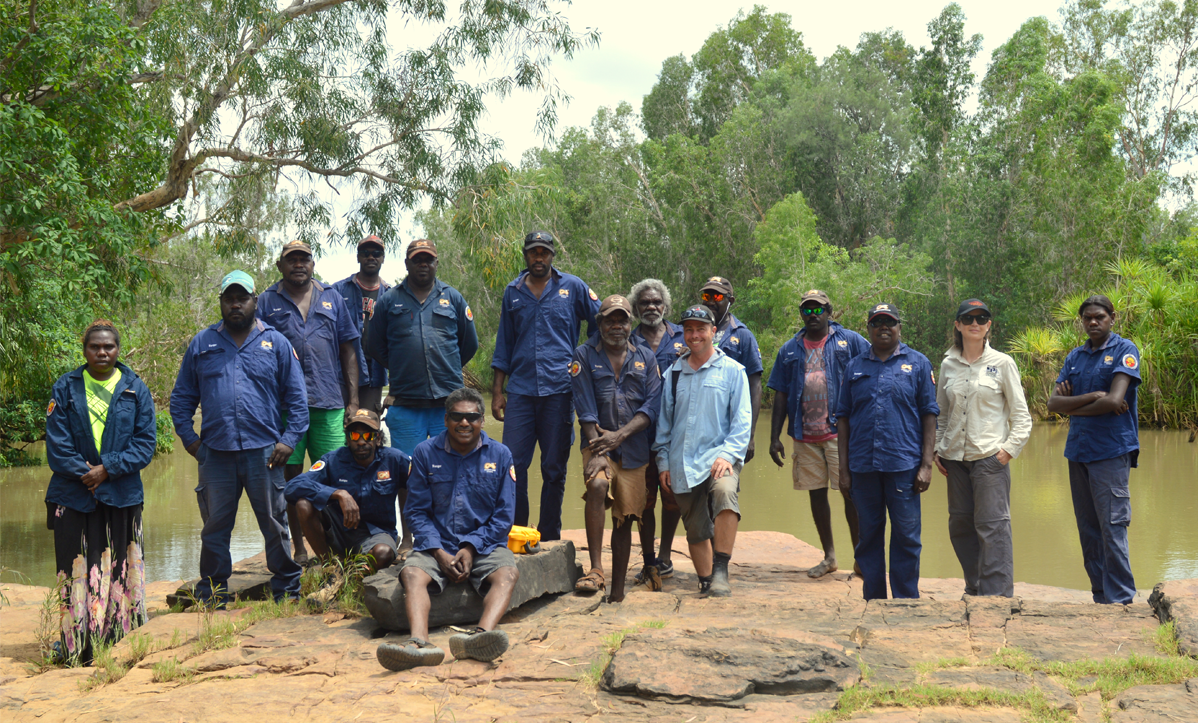
Australia’s northern rivers are a last remaining stronghold for the threatened Largetooth Sawfish (Pristis pristis), but even in this relatively pristine part of the world sawfish populations are severely depleted. Conserving the species here may be its only hope for survival, so people who use the area need to know how they can help.
A research project dedicated to this task has produced education materials including videos, signage and relocation protocols under the guidance of the North Australian Indigenous Land and Sea Management Alliance Ltd (NAILSMA). The Marine Biodiversity Hub project is led by Dr Peter Kyne of Charles Darwin University Research Institute for the Environment and Livelihoods.
On several trips during 2016, Peter and his colleague Christy Davies of NAILSMA spent time with the Malak Malak Ranger Group, the Indigenous land management group for Malak Malak country in the Northern Territory’s Daly River region. Their aim was to look for sawfish to tag, exchange knowledge and develop educational materials. This included interviewing the rangers for the first of three videos: Tyemirerriny: looking after Daly River Sawfish, which was filmed and produced by Michael Lawrence-Taylor. The second and third videos ─ Save a Sawfish, and Sawfish Territory ─ incorporate artwork and interviews from other regions.
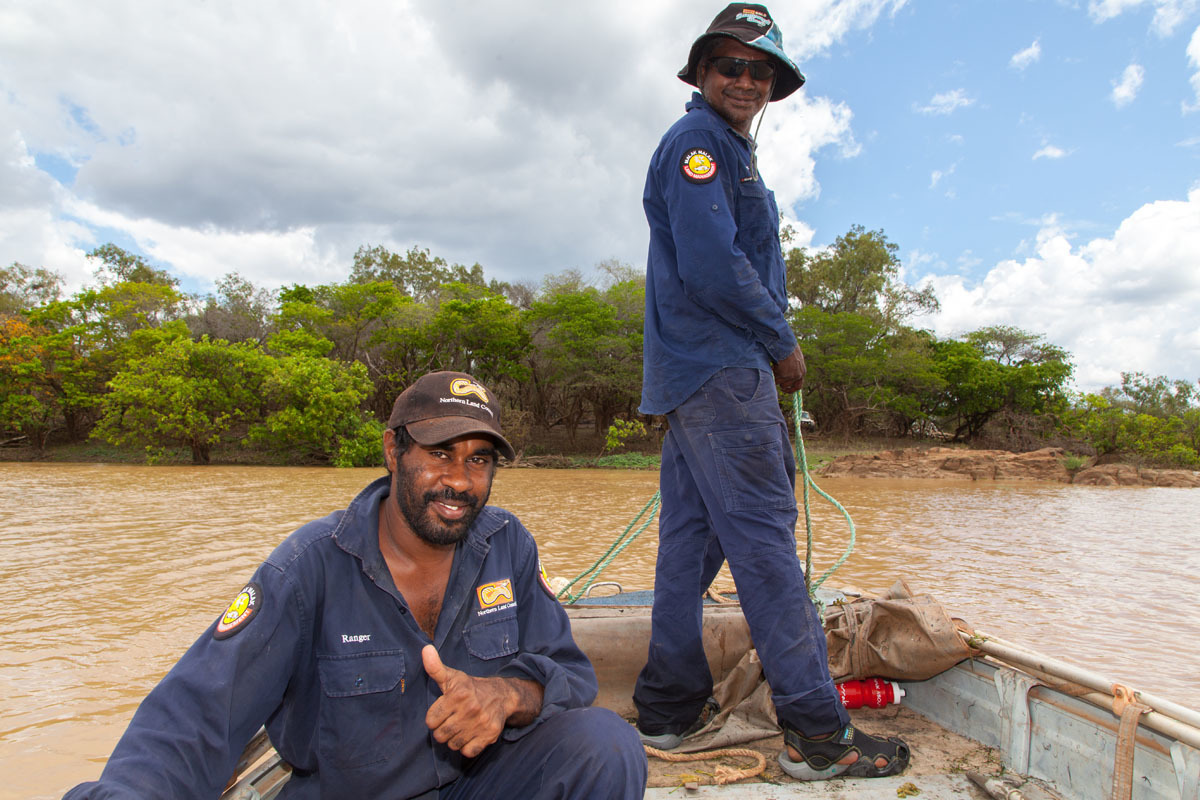
Tyemirerriny: looking after Daly River Sawfish video
Tyemirerriny is the Malak Malak name for the Largetooth Sawfish. The Tyemirerriny video features rangers Amos Shields, Aaron Green and Theresa Lemon. They talk about their interest in sawfish, and their wish to learn more about caring for sawfish as part of looking after the future of their country. They say that every animal means something in the ecosystem and is there for a reason.
In northern Australia, Largetooth Sawfish are born at river mouths and migrate upstream to spend their juvenile years in freshwater. As adults they return to their natal rivers to pup. But Largetooth Sawfish numbers have declined to the point where few adult female sawfish are around to give birth.
If juvenile sawfish can be caught and tagged, they can be tracked for the next few years by a network of acoustic receivers in the river. This would provide valuable scientific information about how and when the sawfish use different parts of the river.
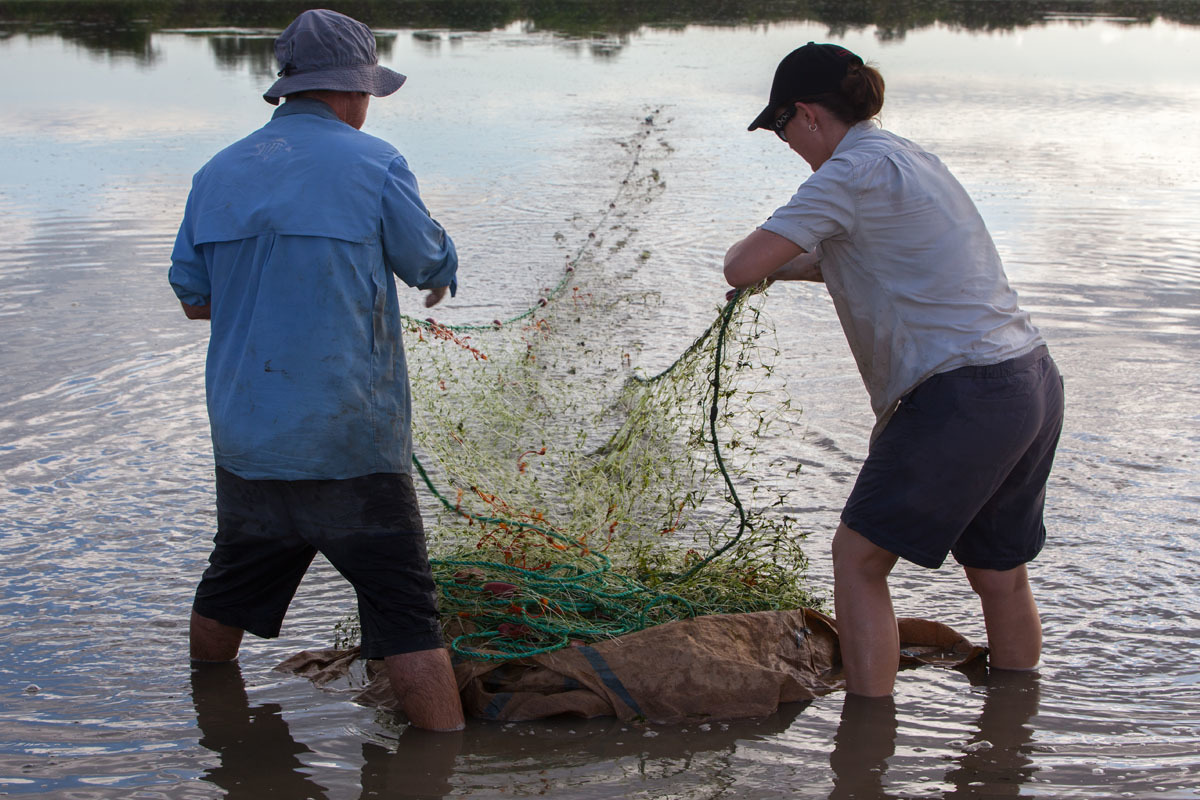
Indigenous community knowledge and experiences relevant to sawfish conservation and related ranger work is also very important. During their visits, Peter and Christy discussed this information with the rangers to learn things such as the best places and times to find sawfish, and how they are valued and used. They also showed Indigenous rangers how to carry out common scientific techniques such as catching, handling and measuring animals, and testing water quality.
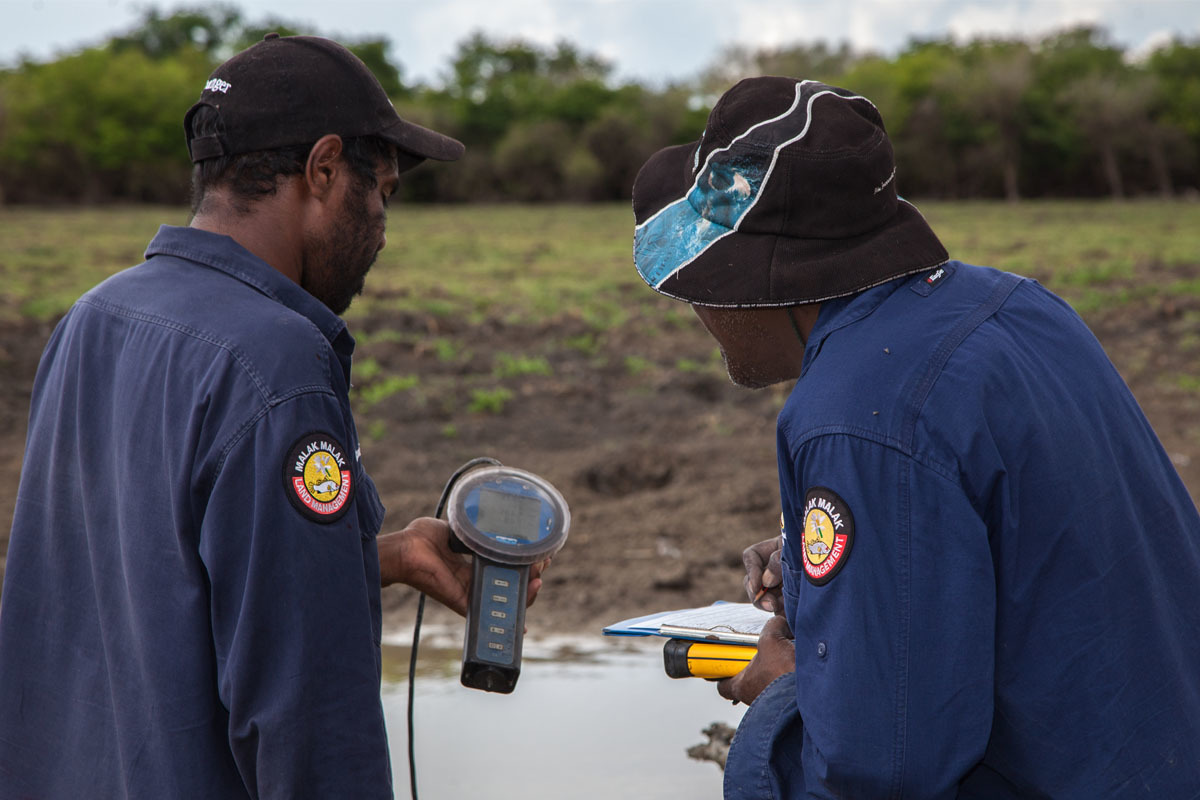
Peter and Christy’s visit was initiated by the Malak Malak Rangers who suggested conducting an annual search for sawfish as a locally driven conservation measure. During a previous research partnership, it was discovered that juvenile Largetooth Sawfish sometimes become trapped in isolated floodplain waterholes linked to the Daly River, and may die if the waterholes dry up before the next wet season.
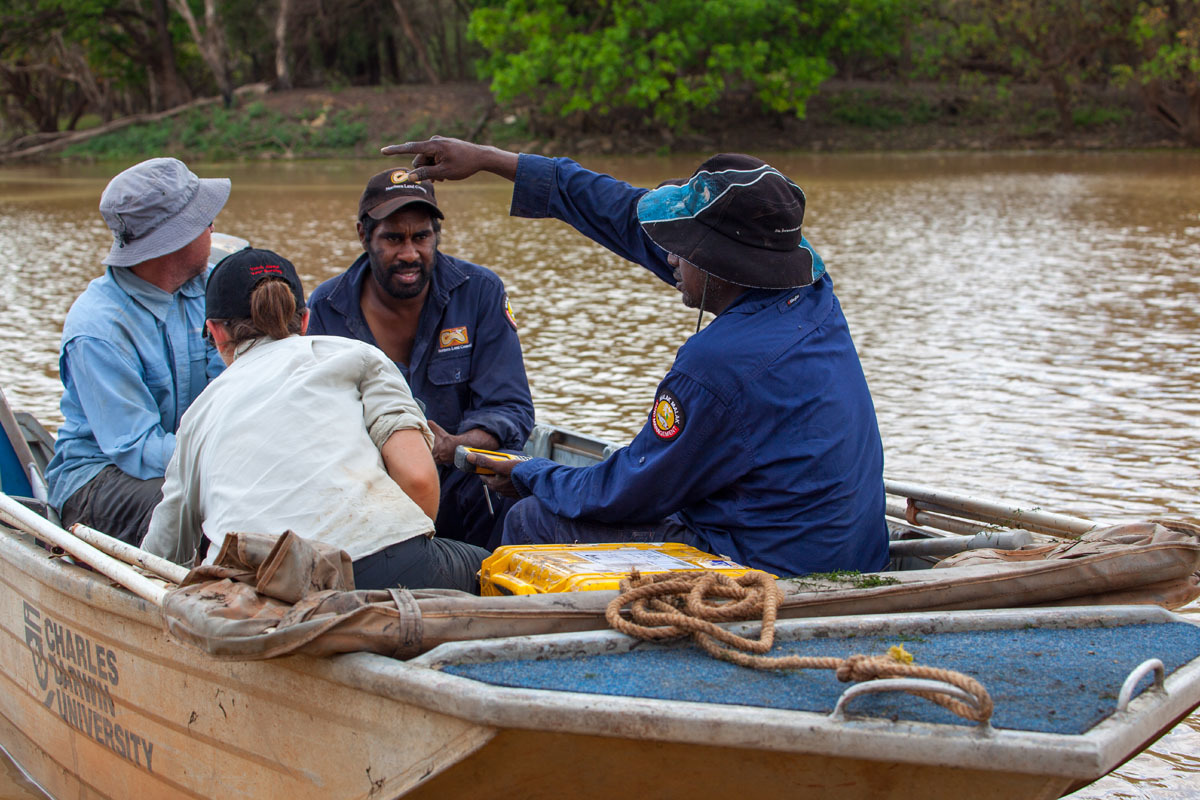
The research team visited seven sites in the Daly River region, including two that had not previously been sampled. Despite a high fishing effort, no sawfish were caught. Following on from this trip, the researchers and Malak Malak Rangers travelled to the Roper River region, working with the Yugul Mangi Rangers from Ngukurr and their northern neighbours the Numbulwar Numburindi Amalahgayag Injung Rangers.
No sawfish were caught during this additional sampling trip, but it was a good opportunity to share stories about sawfish. The visit also offered the opportunity for the researchers to visit the Ngukurr Art Centre to examine sawfish in local art. They spoke to artist Norman Wilfred about the meaning behind his sawfish painting, which the research project bought to use in its second video.
Save a Sawfish animated video
The second video, Save a Sawfish, is an animation that shows how sawfish should be released after being accidentally caught on a line or in a net. It uses an animated sawfish decorated with artwork from a painting commissioned from Norman Wilfred, and explains safe handling, hook removal, removal from a throw net, and safe return to the water. There are three versions of the video: importantly, a version narrated by Grant Thompson in Kriol, a language of the Roper Gulf region, and two English versions narrated by Dan Hartney and Angelina Joshua. Angelina and Grant work for the Ngukurr Language Centre.
Sawfish Territory video
The third video shows Malak Malak Rangers Amos Shields and Aaron Green, Numbulwar Numburindi Amalahgayag Injung Ranger Samson Ngalmi, and Yugul Mangi Ranger Kelvin Rogers talking about sawfish territory. It runs for 50 seconds and is suitable for social media use.
Artwork and educational signage
Sawfish-themed paintings were commissioned from two local Indigenous artists to help make communication materials developed by this project interesting, attractive, culturally inclusive and locally relevant. The process of engaging local artists was carefully managed to specify the potential future uses of the artworks, which have generated significant interest in the local community.
The sawfish painting by Norman Wilfred, and another by Theresa Lemon, have been used to illustrate a set of three public signs about sawfish. These will be erected at boat ramps (public and some private as negotiated by the ranger groups) and river crossings.
Ngukurr and Numbulwar rangers requested the educational signage, which they felt would empower them to speak to people about doing the wrong thing regarding take of sawfish. This includes both any take by non-Indigenous fishers (which is illegal) and the practice of Indigenous people from other communities taking sawfish solely for their rostrum. This is something the rangers consider wasteful and therefore unacceptable.
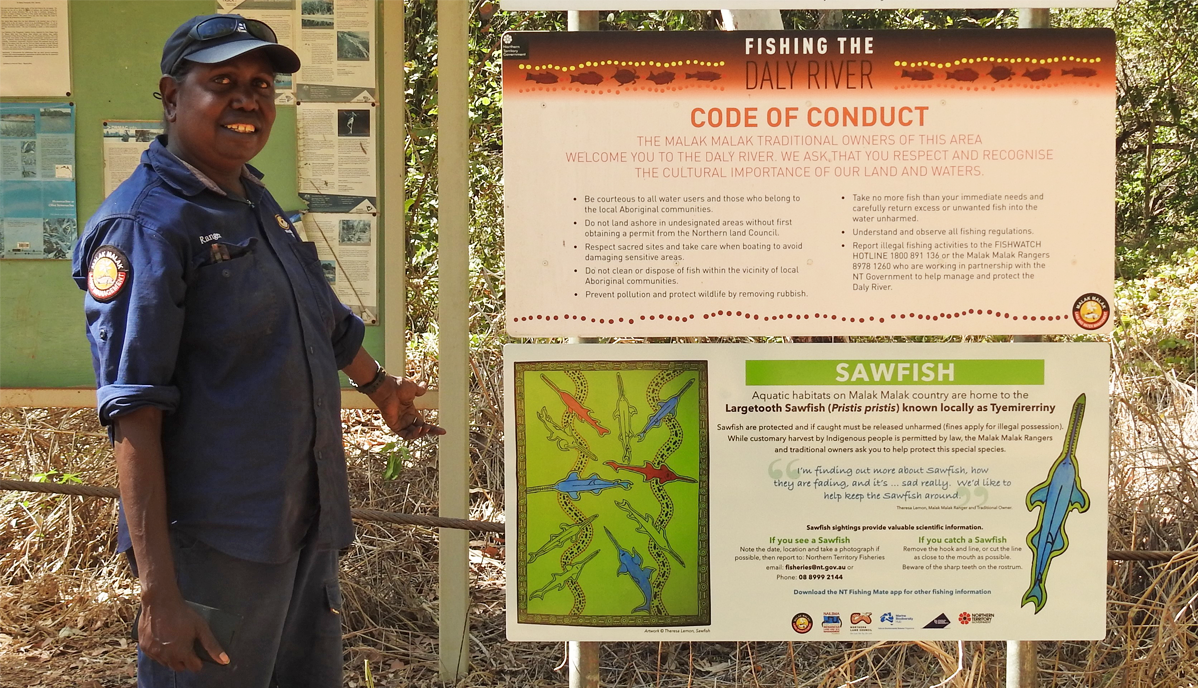
Three customised versions of signs have been designed, (using Norman’s artwork for Ngukurr and Numbulwar, and Theresa’s for Malak Malak), featuring messages that came from the communities. For example, the Malak Malak version says: “While customary harvest by Indigenous people is permitted by law the Malak Malak Rangers and traditional owners ask you to help protect this special species”. Each sign also has a quote from a ranger, to give them a clear link to the community, and includes the Northern Territory Government logo and a reference to the ‘NT Fishing Mate App’. The signs around the Daly River have led to the reporting of several sawfish sightings to NT Fisheries.
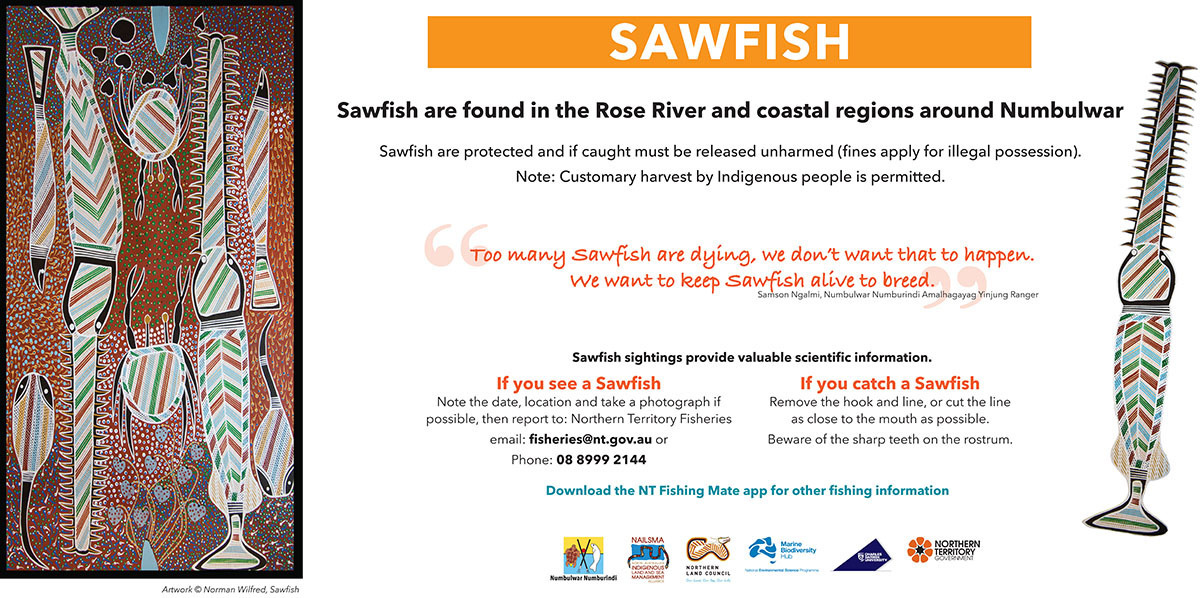
Malak Malak Sawfish Patrol and Relocation Protocol
After working with researchers, Malak Malak Traditional Owners are aware of how few Tyemirerriny are left in the world. Elders already knew that sometimes they got trapped in waterholes on the Daly River floodplain, so when they found some trapped, they called scientists to help with a rescue. This happened back in September 2012 and this video was made about it.
The Traditional Owners, rangers and scientists worked together to remove the sawfish from a tiny waterhole that was fast drying, and release them alive into the Daly River. This worked very well and afterwards the rangers decided that it would be good to do an on-country patrol every year to search for trapped sawfish that might need rescuing.
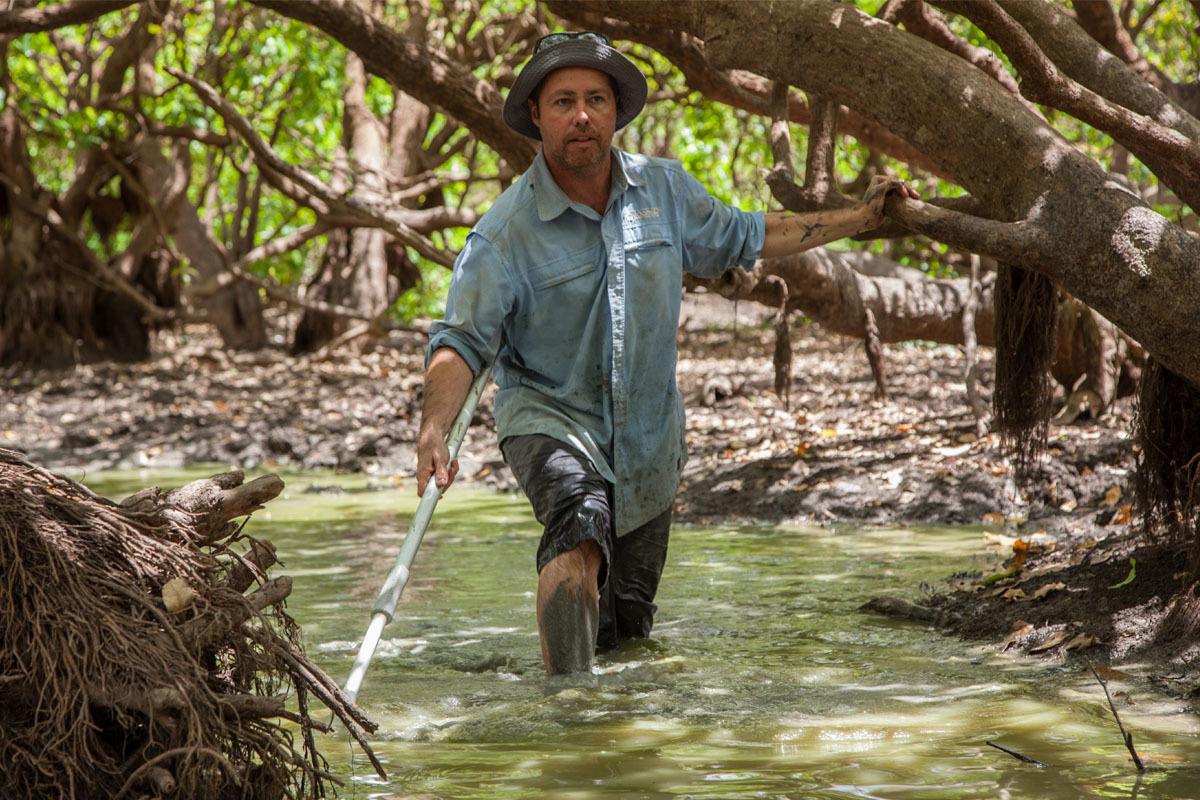
To help with the community with this initiative, scientists worked with rangers to develop a protocol for sawfish patrol and relocation. The protocol covers how to decide when to move Tyemirerriny, and a step-by-step guide to carrying out the relocation. This includes aspects such as an equipment checklist, how to collect measurements and record data in a customised I-Tracker application, **(link to be updated) and how to handle, transport and release the sawfish. While the information belongs to the ranger group, it is also available to other interested researchers.
This work was funded by the Australian Government through the National Environmental Science Programme (NESP) and delivered under the NESP Marine Biodiversity Hub. NAILSMA is a project partner involved with developing partnerships to explore Indigenous knowledge and develop education materials for participating communities.
Further reading
- News - See a related story about the rescue of 38 Largetooth Sawfish pups by Hub scientists and Makak Malak Rangers in September 2017: Team rescues threatened sawfish pups from remote billabong
- Video - Every Sawfish Counts: Sawfish Rescue, Daly River, September 2017
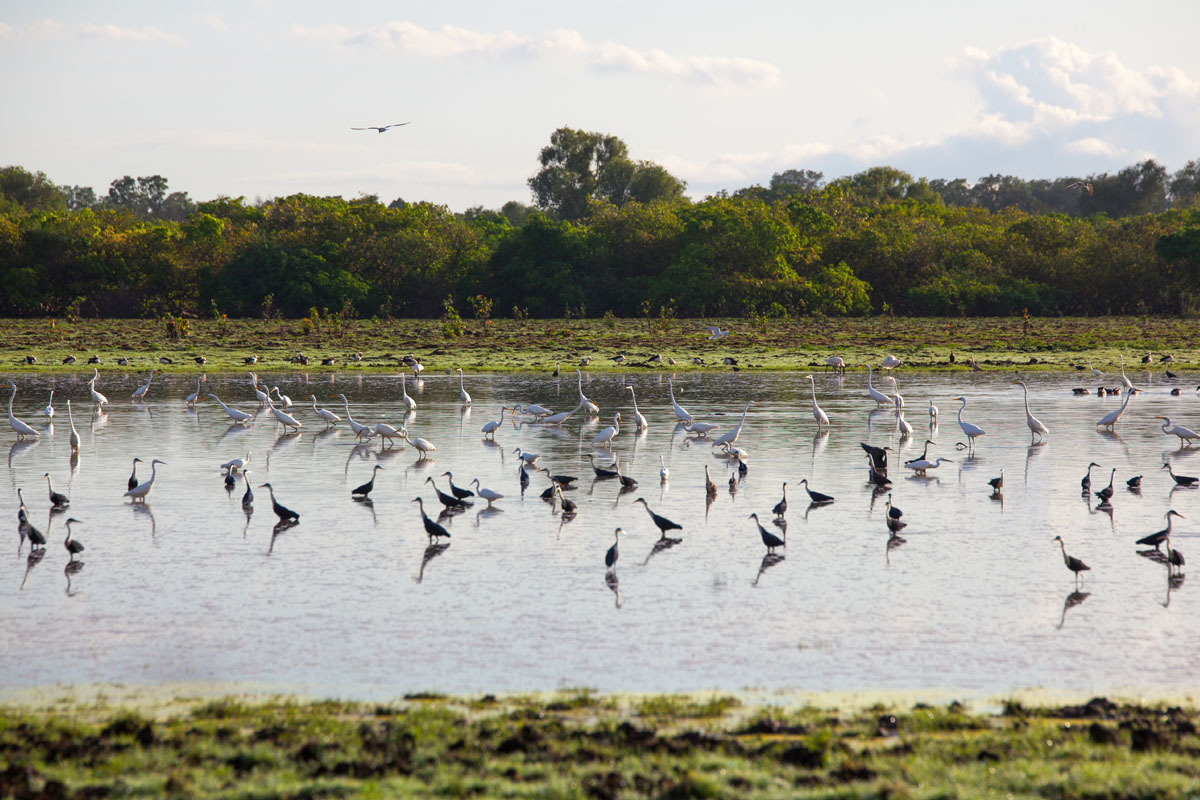
- Log in to post comments
